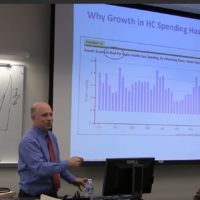One of my interests in health communications is how the findings from scientific research are presented to various stakeholder audiences. Because of this, I was interested to see how the titles of several reports about one study of an investigational compound highlighted different perspectives.
The compound being investigated in this research was resveratrol, which has been shown to replicate the life-span extending effects of dietary restriction in lower animals. (Resveratrol is also the component of red wine that is believed to provide various health benefits.) The new study looked at the effects of resveratrol in mice. The titles of the journal article of the study’s findings, the NIH’s press release and the company’s press release were:
- “Resveratrol Delays Age-Related Deterioration and Mimics Transcriptional Aspects of Dietary Restriction without Extending Life Span” (From Cell Metabolism’s web-site)
- “Resveratrol Found to Improve Health, But Not Longevity in Aging Mice on Standard Diet” (From National Institute of Aging’s web-site)
- “Long-Term Study of Middle-Aged Mice Shows Resveratrol Improves Health and Mimics Some Benefits of Dietary Restriction” (From Sitris’ web-site)
Looking at these titles it is interesting to note that the scientific journal only includes a general statement about life-span. Conversely, the NIH’s press release specifies the study found that only the mice on the standard diet did not see any great life span. And lastly, the title of the company’s press release doesn’t mention life-span changes and only points to the positive effects in biochemical markers of disease. However, the text of the company’s press release states, “The study also found a significant increase in lifespan in both the resveratrol treated group on a high-calorie diet and the resveratrol treated group on a calorie restriction diet, but the treatments did not extend lifespan of mice on a standard diet when started at one year of age.” But, looking at the study’s data tables, it appears that the research only found an extended life-span in the calorie restricted mice if they were given a lower dose of resveratrol, this extended life span was only significantly greater than the mice given a standard diet, and it wasnot significantly greater than the life span of the calorie restricted mice given either a higher dose of resveratrol or none at all – see supplemental table S3.
The differences in these titles isn’t surprising considering their sources, but they do illustrate the challenge facing reporters trying to communicate the results from scientific research to the general public. That is why I focused on the life-span results, since that would have the most public interest and “news worthiness.” Thus, in this case, if reporters relied on the company’s press release, they could end up writing a story slanted one way, whereas if they relied on the NIH’s press release their article could tilt another way. And of course, a more fundamental challenge is how many reporters have the time and scientific background to read and understand the actual journal publication.
Anyone have other perspectives or examples on this topic?

